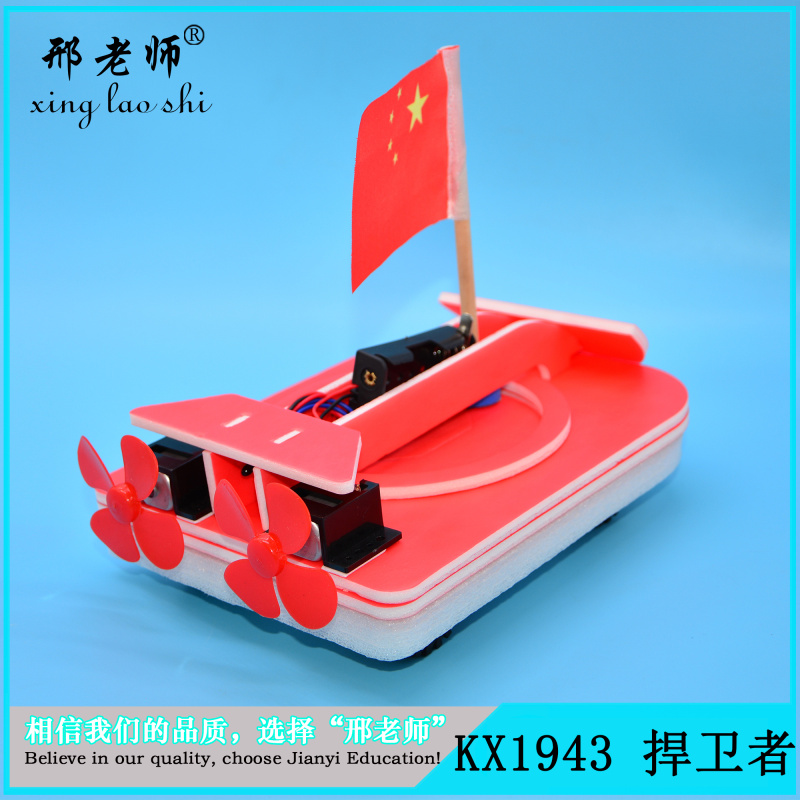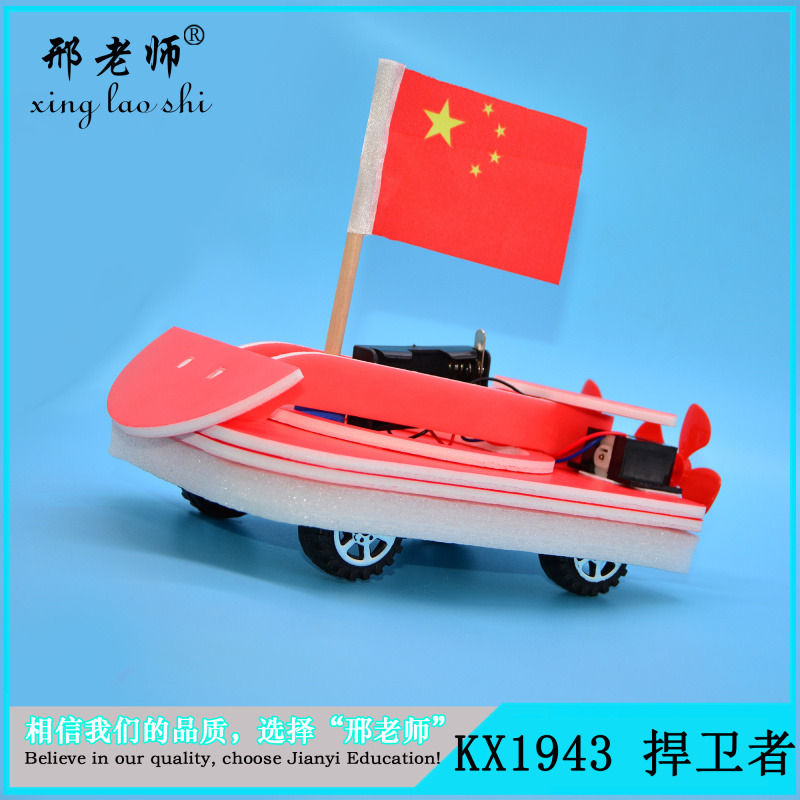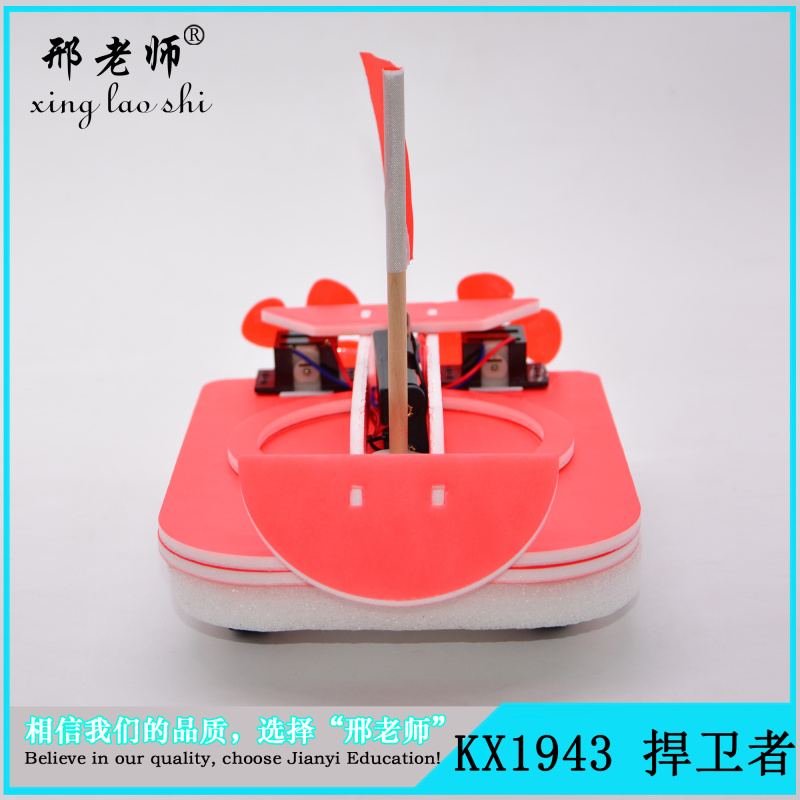Product Name: KX1943 Defender Amphibious Speedboat
Product Code: KX1943
Size: 220*153*190mm
Weight: About 150g
Material: foam + pearl cotton + plastic accessories + straw + wooden stick + flag + motor + double-sided tape + axle....
Color: Red
Is the device powered by batteries? Yes.
Packing: 200pcs
Box Specification: 600*450*550mm
Utilizing the principle of electric motors to convert electrical energy into mechanical energy (wind energy)
Understanding the working principle of a watercraft that is both amphibious and fast.
The action of a force is mutual.
A high-speed boat is the 'sprint champion' among warships, with a maximum speed of 40-60 knots, earning it the nickname of 'marine light cavalry.' High-speed boats are classified by the weapons they are equipped with, including torpedo boats, missile boats, and missile torpedo boats. Although small, high-speed boats have considerable power and play a significant role. For large or medium-sized enemy warships that have intruded into the near-shore range, torpedo boats and missile boats can be deployed individually or in coordination with other surface vessels to destroy the intruding enemy vessels. High-speed boats can also be sent to attack enemy convoys, disrupting enemy maritime transportation lines. Due to their high speed, small hull, and ability to remain concealed, high-speed boats can effectively and suddenly attack enemy bases and anchorage areas. In shallow channels, narrow seas, and areas with reefs and islands, high-speed boats can be used for mine laying.









Among the most powerful fast boats, missile boats are the most notable, inheriting the advantages of torpedo boats and playing a very important role in naval battles. However, compared to large and medium-sized vessels, they have weaker self-defense capabilities and poor sea-resistance performance, making them suitable only for operations in close-to-shore waters.
Modern fast boats are widely applied with missile weapons, advanced miniaturized electronic equipment, large-power gas turbines, and water wings and air cushion technology, and are developing towards the directions of missileization, large-scale, high-speed, and electrification. In future naval battles, fast boats will play a greater role.
Science Project:
1
Prepare the necessary materials for the experiment, including EVA, pipettes, battery boxes, motors, and fan blades, etc.
2
Install in sequence according to the instructions.
Three,
Installation completed and debugging is underway.
Science Expansion:
Fast boats have small tonnage, high speed, and are highly maneuverable. Their displacement is usually in the tens to hundreds of tons, with a cruising speed of 30 to 40 knots, and some can reach up to 50 knots. Their endurance is 500 to 3,000 nautical miles. Fast boats are equipped with weapons, and some are also fitted with 20 to 76 mm caliber naval guns. Larger tonnage fast boats may also include mines, depth charges, and other weapons. The sensing systems they are equipped with include search, detection, weapon control, communication navigation, and electronic warfare.
Scientific Exploration:
1
What scientific facts have you learned by assembling an electric water scooter?
2
What is the scientific principle of an electric water sports boat?
